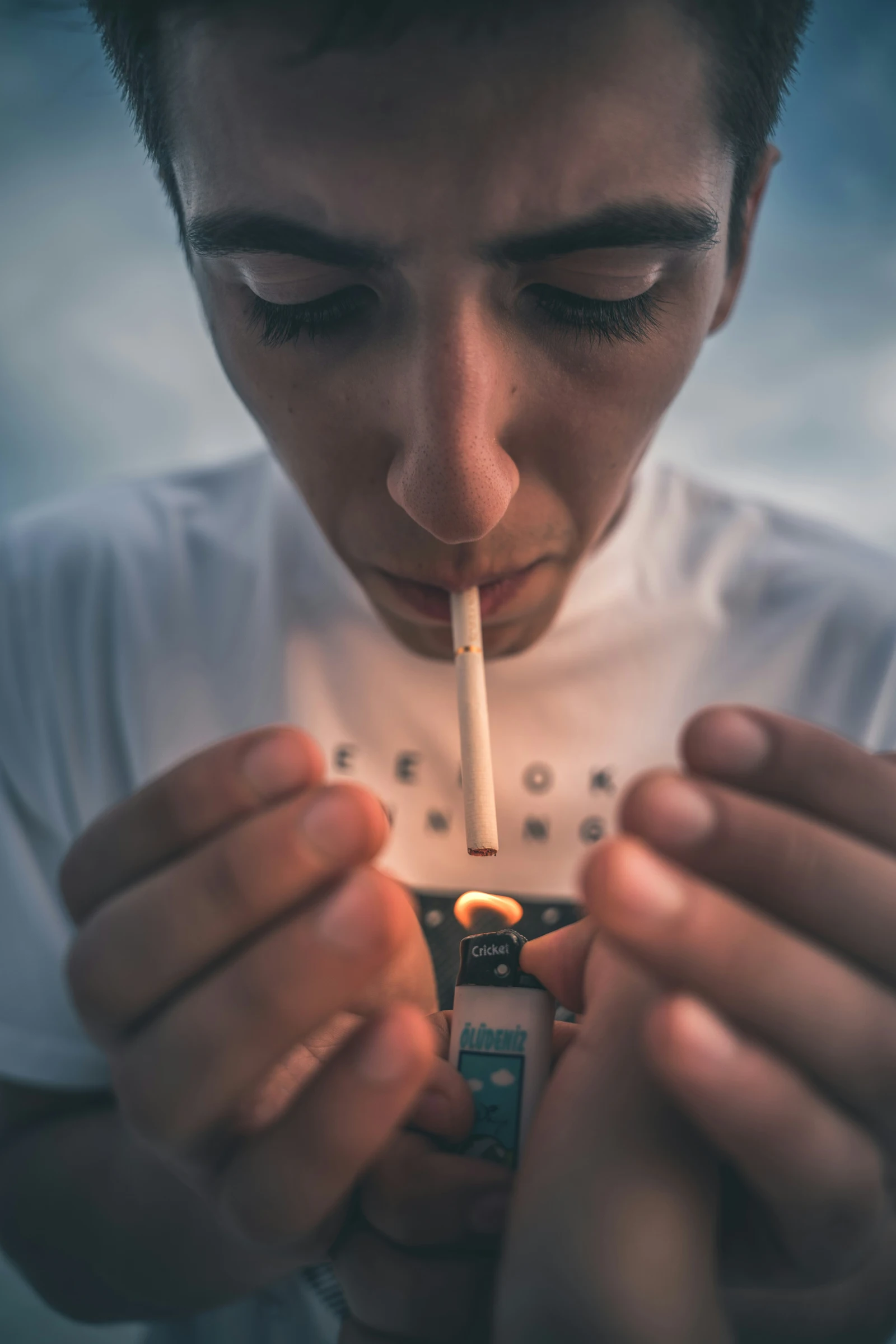Substances | 5 min read
Freebase Cocaine: What It Is, The Risks, and Getting Help
Medically Reviewed By

May 19, 2025
Written By
On May 19, 2025

What you will learn
- Freebasing cocaine involves chemically processing powder cocaine with solvents like ether to create a smokable form that produces intense, rapid effects.
- Though similar to crack cocaine, freebasing results in a purer product but carries extreme risks, including lung damage, heart problems, psychological issues, and a high potential for fatal overdose.
- The effects are immediate and powerful but brief, lasting only five to ten minutes, which often leads to dangerous binge use patterns and rapid addiction.
- Professional treatment, including medical supervision and therapy, offers hope for recovery through comprehensive programs that address both the physical and psychological aspects of addiction.
Freebase cocaine poses severe and potentially lethal risks to those who use it, leading to devastating health consequences beyond those of other forms of cocaine. The chance of overdose remains significantly higher with freebase cocaine, as its intense effects can overwhelm the body within minutes. Since the substance enters the bloodstream extremely quickly, many people develop a powerful addiction that can derail their entire lives.
What is Freebasing Cocaine?
Freebasing cocaine refers to a specific method of chemically processing cocaine hydrochloride (powder cocaine) into a purified form that can be smoked.[1] This process involves using various solvents and chemicals, including highly flammable substances like ether, to remove the hydrochloride base and create a more potent version of the drug. The resulting substance has a lower melting point, allowing it to be heated and inhaled as vapor.
The practice gained prominence in the 1970s and became notorious due to its increased potency and the extreme dangers associated with the preparation process.[2] The chemical conversion makes the cocaine more concentrated and creates an intense, immediate high when smoked. This method of use delivers the drug to the brain much faster than snorting powder cocaine, leading to a more powerful but shorter-lasting effect. The rapid onset and intensity of the high make this form of cocaine particularly dangerous and addictive.
Is Freebasing the Same as Crack Cocaine?
While freebasing cocaine and crack cocaine are similar in many ways, they represent distinct methods of processing and using cocaine.
The primary difference regards their preparation methods – freebasing involves using flammable solvents like ether to extract the hydrochloride base from powder cocaine. In contrast, crack cocaine is typically made by mixing cocaine with baking soda and water, then heating until it forms solid rocks.[3] Both methods create a form of cocaine that can be smoked, but the chemical composition and purity levels often differ.
Although both substances produce intense, rapid effects when smoked, freebasing generally results in a purer form of cocaine compared to crack. However, this doesn’t make it safer – both forms carry severe risks of addiction, overdose, and health complications.[4] The smokable nature of both substances allows for rapid absorption into the bloodstream through the lungs, leading to an intense but brief high that can create powerful cravings and psychological dependence. Many healthcare professionals consider these forms of cocaine particularly dangerous due to their potency and the high risk of developing life-threatening health problems.
What Are the Effects of Freebasing Cocaine?
Freebasing cocaine produces intense and immediate effects due to how quickly the drug reaches the brain through smoking.[5] Within seconds, people experience an extreme euphoric rush, heightened alertness, and intense feelings of confidence and energy. These effects are typically more powerful than those experienced with powder cocaine, but they also fade more quickly, often lasting only five to ten minutes. This short duration frequently leads to repeated use in an attempt to maintain the high, creating a dangerous cycle of binge use.
The immediate physical effects can be overwhelming and dangerous. Heart rate and blood pressure spike dramatically, body temperature rises, and breathing becomes rapid and shallow.[6] Many people experience extreme restlessness, tremors, and muscle twitches. The intense stimulation can cause aggressive or erratic behavior, while some people report feeling invincible or uncomfortably hyper-aware of their surroundings. As the effects wear off, they often experience severe anxiety, irritability, and intense cravings for more of the drug.
Furthermore, the rapid and intense changes in brain chemistry can trigger panic attacks, paranoia, and even temporary psychosis. Many people report feeling suspicious of others, having racing thoughts, and experiencing auditory or visual hallucinations.[7] These mental effects can persist even after the physical effects have worn off, and repeated use increases the risk of developing long-term psychological problems, including persistent anxiety disorders and depression.
What Are the Risks of Freebasing Cocaine?
Freebasing cocaine presents numerous immediate, delayed, mental, physical, severe, and potentially fatal health risks, including [8]
- Severe respiratory problems, including lung damage, bleeding, and chronic breathing difficulties. These issues can persist long after stopping use and may lead to permanent lung damage.
- Heart problems include heart attacks, irregular heartbeat, and cardiovascular collapse. The intense strain on the heart can affect people of any age, even those without previous heart conditions.
- Burns and injuries can result from accidents during the preparation process, as the chemicals used in freebasing are highly flammable and volatile.
- Severe damage to the liver and kidneys from processing toxic chemicals and concentrated cocaine, potentially leading to organ failure.
- Extensive damage to the brain, including increased risk of stroke, seizures, and cognitive impairment, may be permanent.
- Dental problems include severe tooth decay, gum disease, and tooth loss from the caustic nature of the smoke.
- Intense psychological dependence can develop after just a few uses due to the powerful effects and rapid delivery to the brain.
- Severe anxiety, paranoia, and potential psychotic episodes may persist even when not using the drug.
- Increased risk of depression and suicidal thoughts, particularly during withdrawal periods.
- Rapid development of addiction can lead to job loss, financial ruin, and destroyed relationships.
- Legal consequences from possession, preparation, or distribution of the drug.
- Higher risk of engaging in dangerous behaviors while under the influence, potentially leading to accidents or injuries.
Can You Overdose on Freebase Cocaine?
Overdosing on freebase cocaine is a potentially fatal risk that can happen even to someone using it for the first time.[9] The intense concentration and rapid delivery of the drug to the brain make it particularly dangerous, as the body can become overwhelmed within minutes. Many people underestimate how quickly an overdose can occur, especially since the short-lasting effects often lead to repeated use in a short period.
Signs of a freebase cocaine overdose include extreme chest pain, difficulty breathing, irregular heartbeat, seizures, and severe anxiety or panic.[10] The strain on the cardiovascular system can trigger heart attacks or strokes, even in young people with no previous health issues. Body temperature often rises to dangerous levels, potentially leading to organ failure. The risk of overdose increases significantly when people combine freebase cocaine with other substances, particularly alcohol or opioids. These combinations can create unpredictable and life-threatening effects.
Anyone witnessing potential overdose symptoms should call emergency services immediately – rapid medical response can mean the difference between life and death. The highly concentrated nature of freebase cocaine means that even experienced cocaine users may misjudge amounts, leading to accidental overdose.
Get Help for Cocaine and Other Substance Use
Taking the first step toward recovery from cocaine or other substance use can save your life, and help is available in many forms. Professional substance use treatment facilities offer comprehensive programs tailored to each person’s specific needs and circumstances. These programs may include medical supervision for withdrawal, therapy to address underlying issues, and strategies to build a stable foundation for long-term recovery.
Recovery often works best with a strong support system and professional guidance. Treatment facilities provide structured environments where people can focus entirely on their recovery, learning new coping skills, and understanding the root causes of their substance use. Many facilities offer inpatient and outpatient programs, allowing flexibility to match treatment intensity with individual needs. Support groups and ongoing counseling can provide essential guidance during and after formal treatment.
Living a life free from substance use is indeed possible, and you deserve the chance to reclaim your health. Contact a trusted friend, family member, or treatment professional today.
Frequently Asked Questions About Freebasing Cocaine
While both substances involve converting cocaine hydrochloride (powder cocaine) into a smokable form of cocaine, their preparation methods differ significantly. Freebasing requires solvents to remove impurities and create a base form with a low melting point, while crack cocaine uses baking soda as an additive. When people smoke freebase cocaine, the vapors deliver intense effects through a glass pipe. This form of cocaine typically contains fewer impurities than crack cocaine, though both carry severe health risks.
The effects of freebasing cocaine can quickly lead to a cocaine overdose. Warning signs include dangerous changes in heart rate, severe chest pain suggesting an impending heart attack, and intense psychosis. During an overdose, people may experience withdrawal symptoms like extreme agitation and paranoia. The risk of overdose increases significantly when combining freebase cocaine use with other substances, particularly opioids or fentanyl. The short-term effects of an overdose can cause lasting damage to mental health and physical well-being.
Recovery from cocaine addiction is achievable through comprehensive addiction treatment. Treatment programs typically begin with detox to address withdrawal symptoms, followed by therapy that helps people understand their drug use patterns and develop coping strategies. Many treatment centers offer specialized substance abuse programs that combine psychiatry, counseling, and support groups. The path to recovery often involves helping the loved one understand both the physical and psychological aspects of cocaine abuse. With proper support and long-term treatment, people can overcome drug addiction and maintain lasting recovery.
Ascendant New York Editorial Guidelines
Here at Ascendant New York, we understand the importance of having access to accurate medical information you can trust, especially when you or a loved one is suffering from addiction. Find out more on our policy.
[1] Perez-Reyes, M., Di Guiseppi, S., Ondrusek, G., Jeffcoat, A. R., & Cook, C. E. (1982). Free-base cocaine smoking. Clinical Pharmacology and Therapeutics, 32(4), 459–465. https://pubmed.ncbi.nlm.nih.gov/7116761/ on January 13, 2024
[2] BACKGROUND AND METHODOLOGY. (n.d.). https://www.ussc.gov/sites/default/files/pdf/news/congressional-testimony-and-reports/drug-topics/199502-rtc-cocaine-sentencing-policy/CHAP1-4.pdf on January 13, 2024
[3] Cocaine Paste – an overview | ScienceDirect Topics. (n.d.). Www.sciencedirect.com. https://www.sciencedirect.com/topics/medicine-and-dentistry/cocaine-paste on January 13, 2024
[4] National Institute on Drug Abuse. (2024, March). Cocaine. National Institute on Drug Abuse. https://nida.nih.gov/research-topics/cocaine on January 13, 2024
[5] FORMS OF COCAINE, METHODS OF USE, EFFECTS, AND DEPENDENCY. (n.d.). https://www.ussc.gov/sites/default/files/pdf/news/congressional-testimony-and-reports/drug-topics/200205-rtc-cocaine-sentencing-policy/ch2.pdf on January 13, 2024
[6] Cocaine heart attack: Symptoms and more. (2023, November 21). Www.medicalnewstoday.com. https://www.medicalnewstoday.com/articles/cocaine-heart-attack on January 13, 2024
[7] Morton, W. A. (1999). Cocaine and Psychiatric Symptoms. The Primary Care Companion to the Journal of Clinical Psychiatry, 01(04), 109–113. https://pmc.ncbi.nlm.nih.gov/articles/PMC181074/ on January 13, 2024
[8] Cleveland Clinic. (2023, October 23). Cocaine Highs & Lows. Cleveland Clinic. https://my.clevelandclinic.org/health/articles/4038-cocaine-crack on January 13, 2024
[9] Richards, J. R., & Le, J. K. (2020). Cocaine Toxicity. PubMed; StatPearls Publishing. https://www.ncbi.nlm.nih.gov/books/NBK430976/ on January 13, 2024
[10] Richards, J. R., & Le, J. K. (2020). Cocaine Toxicity. PubMed; StatPearls Publishing. https://www.ncbi.nlm.nih.gov/books/NBK430976/ on January 13, 2024




